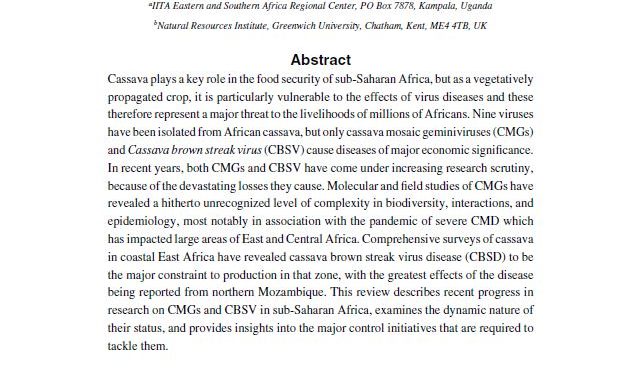Cassava plays a key role in the food security of sub-Saharan Africa, but as a vegetatively propagated crop, it is particularly vulnerable to the effects of virus diseases and these therefore represent a major threat to the livelihoods of millions of Africans. Nine viruses have been isolated from African cassava, but only cassava mosaic geminiviruses (CMGs) and Cassava brown streak virus (CBSV) cause diseases of major economic significance. In recent years, both CMGs and CBSV have come under increasing research scrutiny, because of the devastating losses they cause. Molecular and field studies of CMGs have revealed a hitherto unrecognised level of complexity in biodiversity, interactions, and epidemiology, most notably in association with the pandemic of severe cassava mosaic disease which has impacted large areas of East and Central Africa. Comprehensive surveys of cassava in coastal East Africa have revealed cassava brown streak virus disease (CBSD) to be the major constraint to production in that zone, with the greatest effects of the disease being reported from northern Mozambique. This review describes recent progress in research on CMGs and CBSV in sub-Saharan Africa, examines the dynamic nature of their status, and provides insights into the major control initiatives that are required to tackle them.
Region: Uganda
Date published:
2003
Published by:
Plant virology in sub-Saharan Africa
Type of resource:
Journal article
Resource topic:
Cassava
Project/Programme: Not specific
Pest/Disease: CMGs and CBSVs
Pages:
37
File type:
External link (400 KB)




